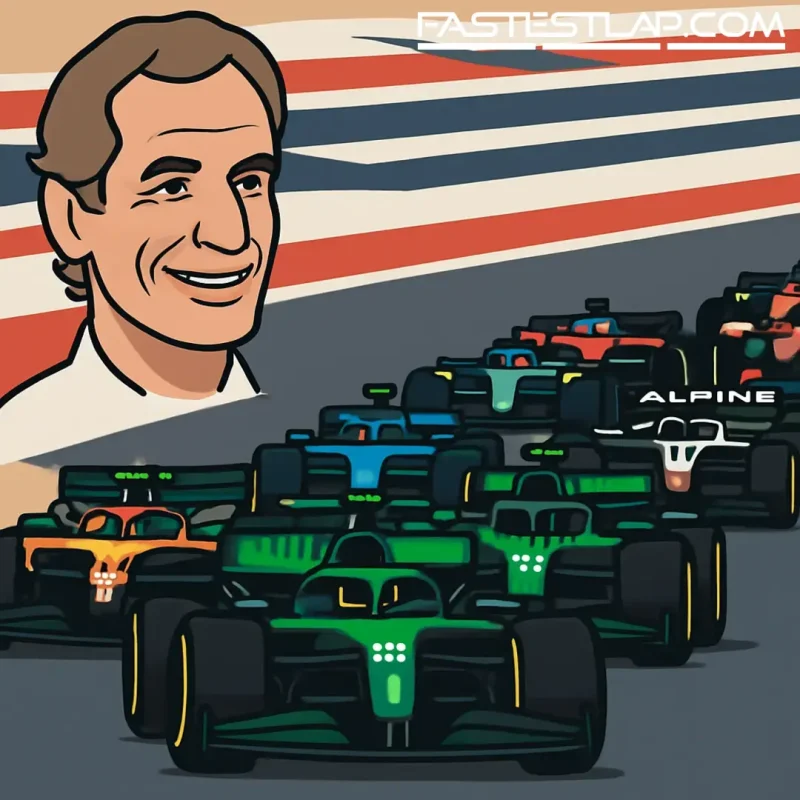Bobby Epstein has seen a few F1 trends come and go from his perch atop the hill at Circuit of the Americas. One of them, he reckons, is about to flip.
With Cadillac set to join the grid in 2026 under the General Motors banner, the COTA chairman believes the American luxury marque won’t just show up — it could bloody a few noses.
“I don’t expect them to be the last-place team,” Epstein said this week, half-grinning as he recalled a recent conversation about paddock logistics. With an 11th entry arriving, Austin is adding garages. By tradition, the new squad inherits the last box on pit lane. “Someone said, ‘Well, you’re building the Cadillac garages.’ Those garages are the ones that the last-place team is. I said, ‘What makes you think that’s going to be Cadillac?’”
It’s classic Epstein: part promoter, part provocateur, and always bullish on the home market. But he’s not simply cheerleading. He’s seeing momentum.
Cadillac’s entry will be run by TWG Motorsports Group with Graeme Lowdon heading the team, and the brand has already nailed down a driver pairing that suggests it doesn’t plan to be a novelty act. Multiple Grand Prix winners Sergio Perez and Valtteri Bottas — both set for comebacks after a year on the sidelines — give the project a bankable core of experience. Meanwhile, IndyCar star Colton Herta will serve as reserve while transitioning to Formula 2 in 2026 alongside F1 testing mileage.
On paper, this is a U.S. story with proper F1 credentials. Cadillac will become the second American-rooted outfit on the grid alongside Haas, but with the extra heft of a Detroit giant behind it. Epstein expects the brand to lean in hard.
“I think Cadillac is going to be really great for us, and for the sport,” he said. “They were here this past weekend for the WEC race. I think they’re going to be very engaged as a brand, which could be great. I think about all the possibilities we can do together because they’re a manufacturer — from the hot-lap ride, which could be a Cadillac ride, to a Cadillac garage tour, to having a focus on getting an American driver. That constellation is going to be very good for us.”
The timing isn’t bad, either. F1’s 2026 reset will remodel both the chassis and the power units, which tends to shuffle the deck — a gift to newbies willing to take a swing. Cadillac won’t hit the ground with a full in-house hybrid yet; GM’s power unit project is slated for 2029. Instead, the team will start with Ferrari engines — hardly a worst-case scenario for a freshman year.
That’s where Epstein’s hunch about competitiveness begins. With two seasoned winners at the wheel, a proven PU bolted to the back, and a regulation clean sheet, Cadillac has a believable route to tripping up established midfielders from the jump. Ambitious, sure. Impossible? Not really.
There’s also the obvious: America loves a winner, but even a credible scrapper with star drivers can move the needle. Epstein, who’s helped shepherd F1’s growth in the U.S. from a single race to a full-blown tour, knows what would truly light the fuse — an American at the sharp end.
“For the sport’s sake, separate from just COTA and the grand prix at our track, if there were an American champion driver, that would go a lot farther,” he said. “That would take it to the next level.”
Herta’s name will inevitably hover over that conversation. For now, he’s the reserve with a clear path into the F1 paddock, a foot on both rungs of the ladder in 2026. Whether he’s Cadillac’s long-term answer or simply the catalyst that gets more American talent through the door, the upside for U.S. promoters is obvious.
Cadillac’s arrival also breaks a long-standing ceiling. An 11th entry means the grid finally expands beyond 10 teams for the first time in over a decade, a tangible sign the series is willing to grow rather than merely circle the wagons. For venues like Austin, that’s not just symbolism — it’s infrastructure and opportunity. More garages to build, more hospitality to sell, and more narratives to market to a country that’s only getting hungrier for Formula 1.
And if you’ve watched Epstein work, you know he’ll squeeze every drop from it. Cadillac hot laps? Check. Team-led fan experiences? Absolutely. Brand activations that don’t feel like brand activations? That’s the brief.
There will be sceptics, as there always are when a newcomer rolls into F1 promising competence. The sport has a way of humbling timelines and budgets. But if Cadillac’s start-up play — Ferrari power, battle-tested race-winners, an engaged manufacturer with U.S. swagger, and a regulation reset — feels more thought-through than most debuts, that’s because it probably is.
Don’t etch that last garage plaque just yet.




